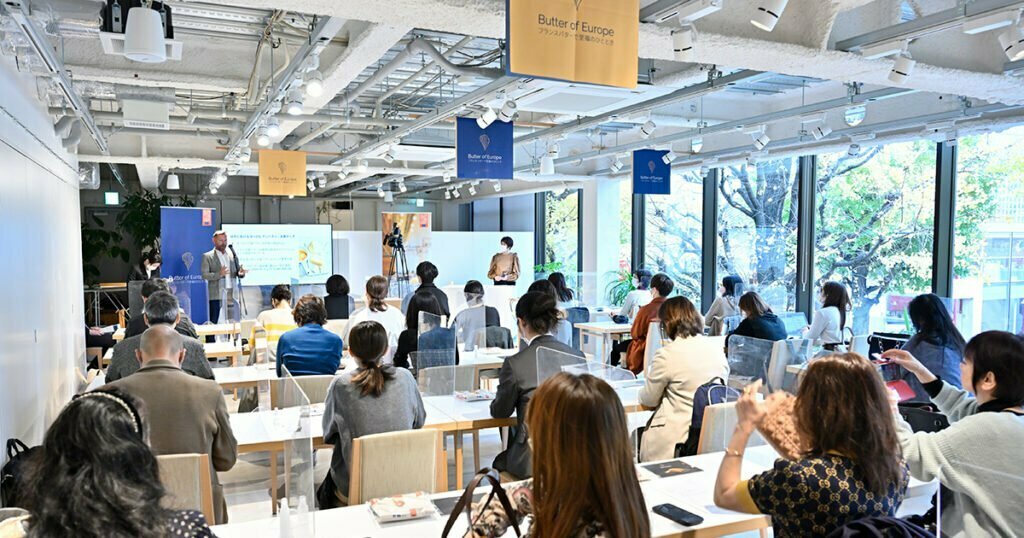
Background:
In collaboration with Slingshot, ShapeWin developed an event planning strategy for CNIEL, an advocacy group that represents the interests of France’s dairy industry. Since 2018, the European Union and Japan have signed a Free Trade Agreement that allows for European products, such as wine and dairy to enter Japan with lowered tariffs. Although we have worked with CNIEL in the past before, this was the first time that ShapeWin was contacted to do event organizing and social media in addition to media relations.
Our Task:
In Japan, the perception of French dairy is that it is expensive due to historical import tariffs. This perception has been compounded by the COVID-19 pandemic, as Japanese citizens were buying more locally produced food products. We needed to put on an event that challenged the historical perception of French butter. Additionally, the objective was to increase awareness of French butter on Japanese social media and in the HORECA (hotel, restaurant, café) industry.
Our Strategy:
A strategy has been built around a dedicated pop-up store for CNIEL, where we promoted pastries using French butter. We also held a press conference and invited media, food suppliers, consumers and influencers to seminars featuring representatives from CNIEL and the French embassy to explain the benefits of French butter. The pop-up store for one week, from December 1-7, 2022
Tactics:
One of the first things we needed was a recognizable pastry chef to promote the project so we selected Japanese pâtissier Toshihiko “Toshi” Yoroizuka. Chef Yoroizuka is a well-known pâtissier in Japan, having trained in Europe and appeared on various television programs, including the Japanese version of Iron Chef.
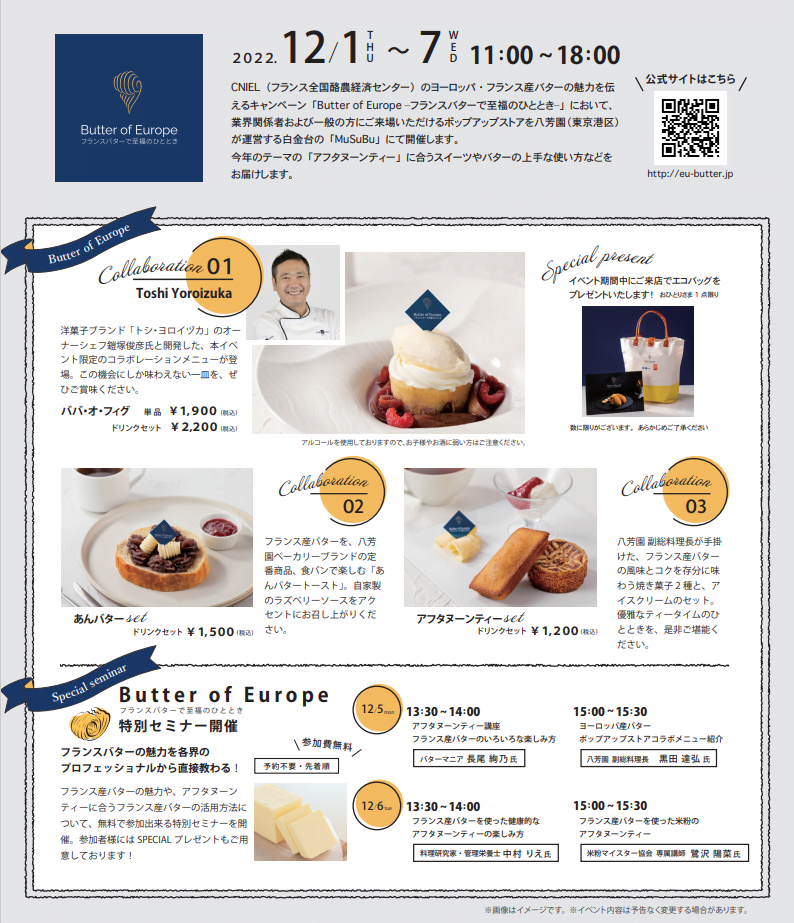
Chef Yoroizuka was the lead pastry chef for our pop-up store and helped organize and design the menu for our collaboration. We felt that he would be a good ambassador for our campaign, serving as a bridge between Japan and France through sweets. Additionally, having a celebrity chef would attract media and influencers. Also, with representatives of the French embassy in attendance, Chef Yoroizuka’s presence would add legitimacy to our event. The event needed media attention and a media briefing. His reputation as a spokesperson at speaking events was high, and he performed above expectations.
Chef Yoroizuka’s personal contribution to the menu was a pastry called “Baba au Fig”. It is a Japanese take on “Baba au Rhum”, which he developed after training at a pastry shop in France. He wanted Japanese people to enjoy the original rich flavor of French butter, so he created something that not only brought out the taste of French butter, but would be something that Japanese people could appreciate.
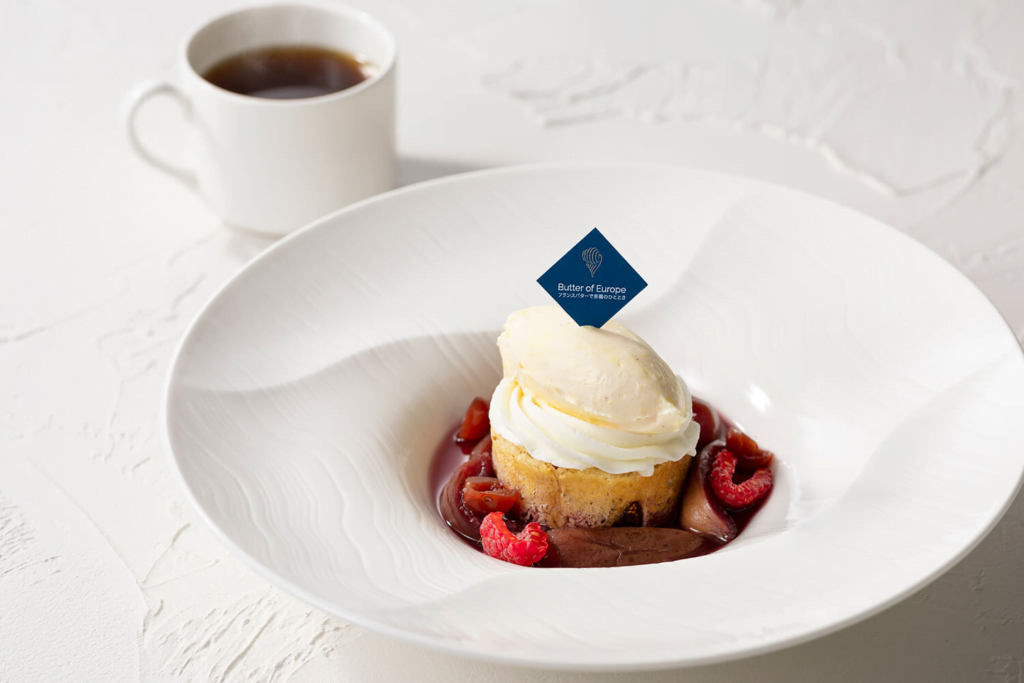
The theme of the promotion chosen this year by the leading agency Slingshot was “Afternoon Tea.” As the previous year’s promotion was “bakery” we designed the pop-up store to be reminiscent of a trendy European café where you can go to get afternoon tea and sweets. Many of these sweets were made using bread, as bread is treated as a snack and not a meal in Japan.
For the location of the pop-up store, we chose MuSuBu, an event space owned by Happou-en located in Minato Ward, the heart of Tokyo. Happou-en is notable for being one of Japan’s luxury “omotenashi” (high class hospitality) venues, and MuSuBu is its flagship store. Because this particular neighborhood is famous for its balancing of both Western and Japanese aesthetics, we felt that MuSuBu was the ideal place to host the event. Additionally, MuSuBu boasts a two-floor event space, allowing us to host the pop-up store downstairs while holding our event seminars and press conference upstairs.
The collaboration menu with Happou-en was created to appeal to Japanese tastes while showing how French butter can add to their appeal. Because bread and butter is not a staple food in the Japanese diet, we needed to show Japanese people how they can incorporate these ingredients into their lifestyle. An example of this is the inclusion of “An-Butter” Toast, a Japanese pastry that uses sweet red bean paste (Anko) and butter served on a slice of bread. It has recently become a very popular dessert in Japan.
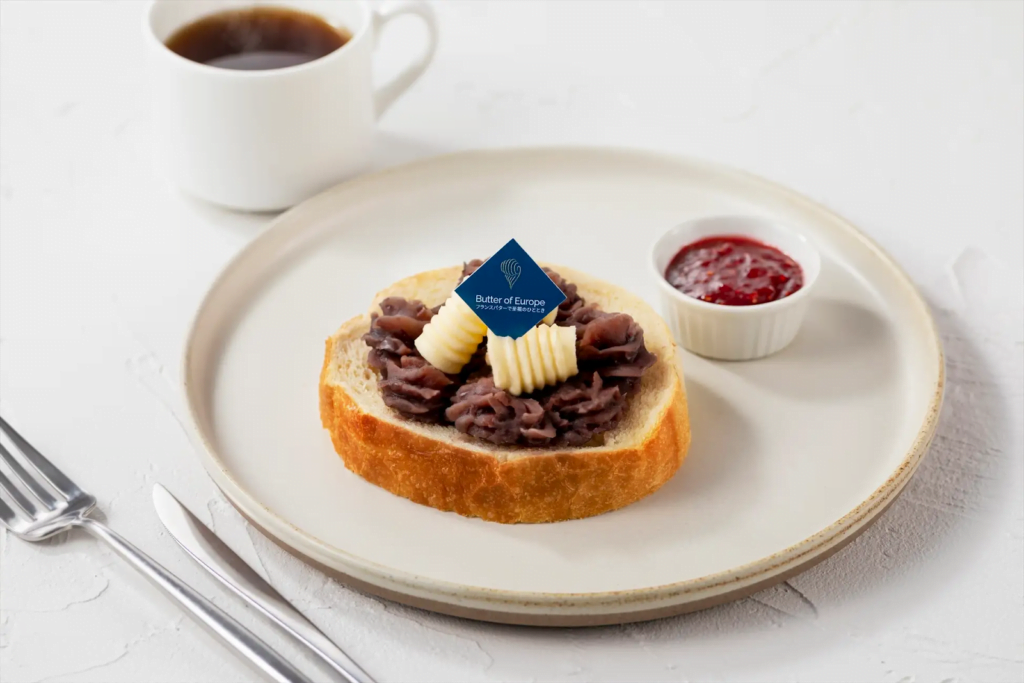
Visitors to the pop-up store also received a gift bag which included a trial sample of French butter and a recipe book. In-store, we also advertised various types of French butter, such as lightly-salted butter, flavored butter and low-fat butter.
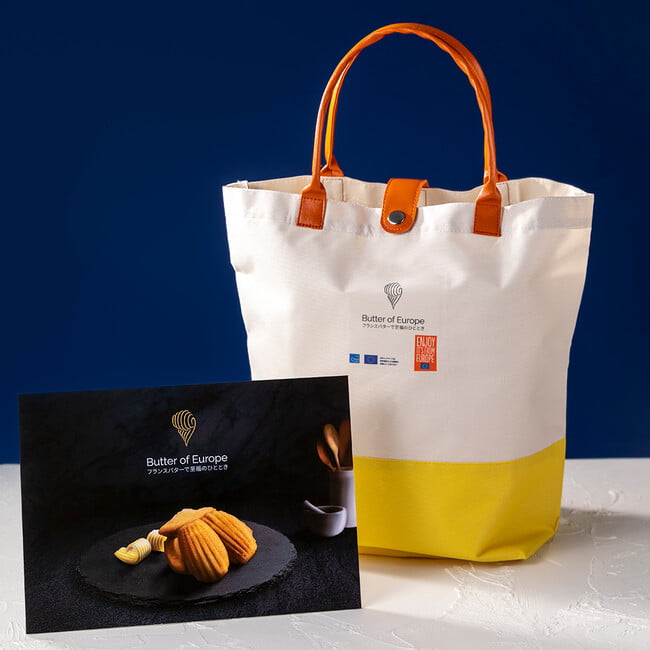
Seminars were hosted over the course of five days. One of the challenges of the event was that we wanted to appeal to both the B2B and B2C audiences with the event. So we reserved the first day for media, influencers, HORECA industry professionals and distributors, while the rest of the seminars were accessible to the general public. In Japan, it is important to maintain a healthy relationship with relevant media outlets in order to facilitate an environment for positive coverage. Thus, invite cooking and lifestyle media and trade media in the food and HORECA industry.
The chosen influencers for our campaign were Japanese Instagrammers who focus on cooking and recipes. Similar to journalists and media, influencers need to be delegated respectfully and considered based on their brand style and status. To maximize our engagement while staying within our client’s budget, we decided to target micro influencers who had between 10,000 to 100,000 followers. While very popular influencers (+100,000 followers) can produce a large outreach, micro influencers tend to have better engagement and interactions with their community. In addition to having influencers post pictures of the event and the food on social media, we also asked them to share recipes of food that uses French Butter.
Outcomes:
In the press conference, we had a total of 31 participants, and were covered in 50 news outlets. For the event we focused on targeting influencers and top media editors/writers, as online and print magazines still have a large influence in the Japanese media landscape. Here is an example of some of our media coverage:
Kawa-colle: [Report] EU French butter X Toshi Yoroizuka collabo menu at Musubu in Shirokane-dai
Posts from key opinion leaders had an approximate total of 1.4 million impressions. 109 posts were made on Instagram using our hashtag and the top post from a paid partnership had over 100 likes.
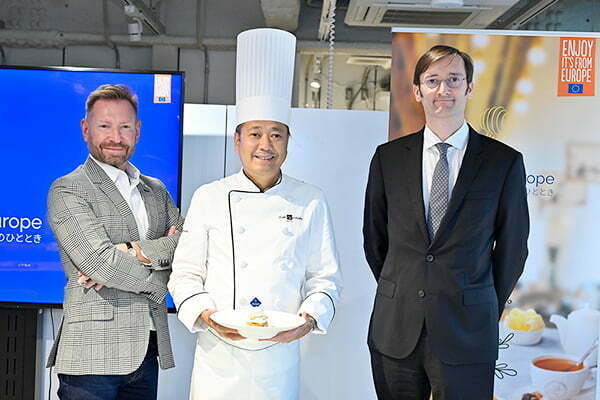
Conclusion
Understanding the Japanese market is integral to having a strong PR presence in Japan. It is important to maintain strong relationships with influencers and media outlets in order to get the coverage the client desires.
We chose a suitable location for our pop-up store that suited our client’s image and branding. Additionally, we created a menu that included items that both exemplified the usage of French butter, while still appealing to Japanese consumers. Attempting to impose a foreign product in Japan is not a good strategy. It is important to localize a product so that it fits trends in the target market, and to give consumers advice on ways to use the product to enrich their daily lives.
It is also necessary to give influencers a clear set of guidelines to follow so that they can tailor their content in ways suitable to their brand while still promoting the product. Enforcing strict regulations for collaborating with influencers is often not a good idea, and will put influencers off from wanting to collaborate with your client’s brand in the future. It is important to be able to find a good middle ground, where by tailoring your PR campaign to the Japanese market, your company will be able to get the outcomes it desires.